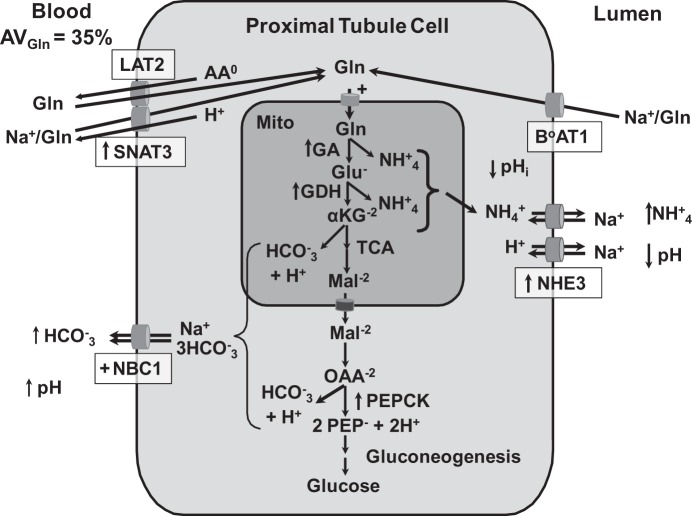Fig. 1.
Renal proximal tubular catabolism of glutamine. During chronic acidosis, approximately one-third of the arterial glutamine is removed during a single pass through the kidney. The glutamine filtered by the glomeruli is nearly quantitatively extracted from the lumen of the proximal convoluted tubule by B0AT1, a Na+-dependent neutral amino acid cotransporter in the apical membrane. Uptake of glutamine through the basolateral membrane occurs by reversal of the neutral amino acid exchanger (LAT2) and/or through increased expression of the basolateral glutamine transporter (SNAT3). Increased renal catabolism of glutamine is facilitated by increased expression (arrows) of the genes that encode glutaminase (GA), glutamate dehydrogenase (GDH), phosphoenolpyruvate carboxykinase (PEPCK), the apical Na+/H+ exchanger (NHE3), and SNAT3. In addition, the activities of the mitochondrial glutamine transporter and basolateral Na+/3HCO3− are increased (+). Increased expression of NHE3 contributes to the transport of ammonium ions and the acidification of the luminal fluid. The combined increases in renal ammonium ion excretion and gluconeogenesis result in a net synthesis of HCO3− ions that are transported across the basolateral membrane by the Na+/3HCO3− cotransporter (NBC1). αKG, α-ketoglutarate; Mal, malate; OAA, oxaloacetate; PEP, phosphoenolpyruvate.

